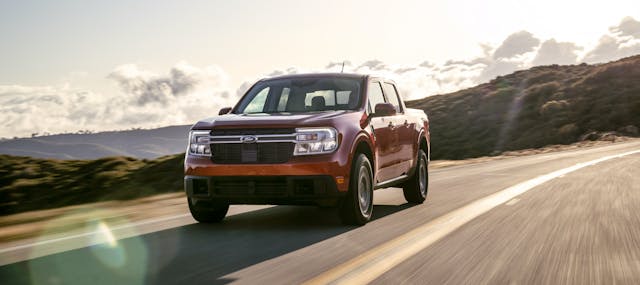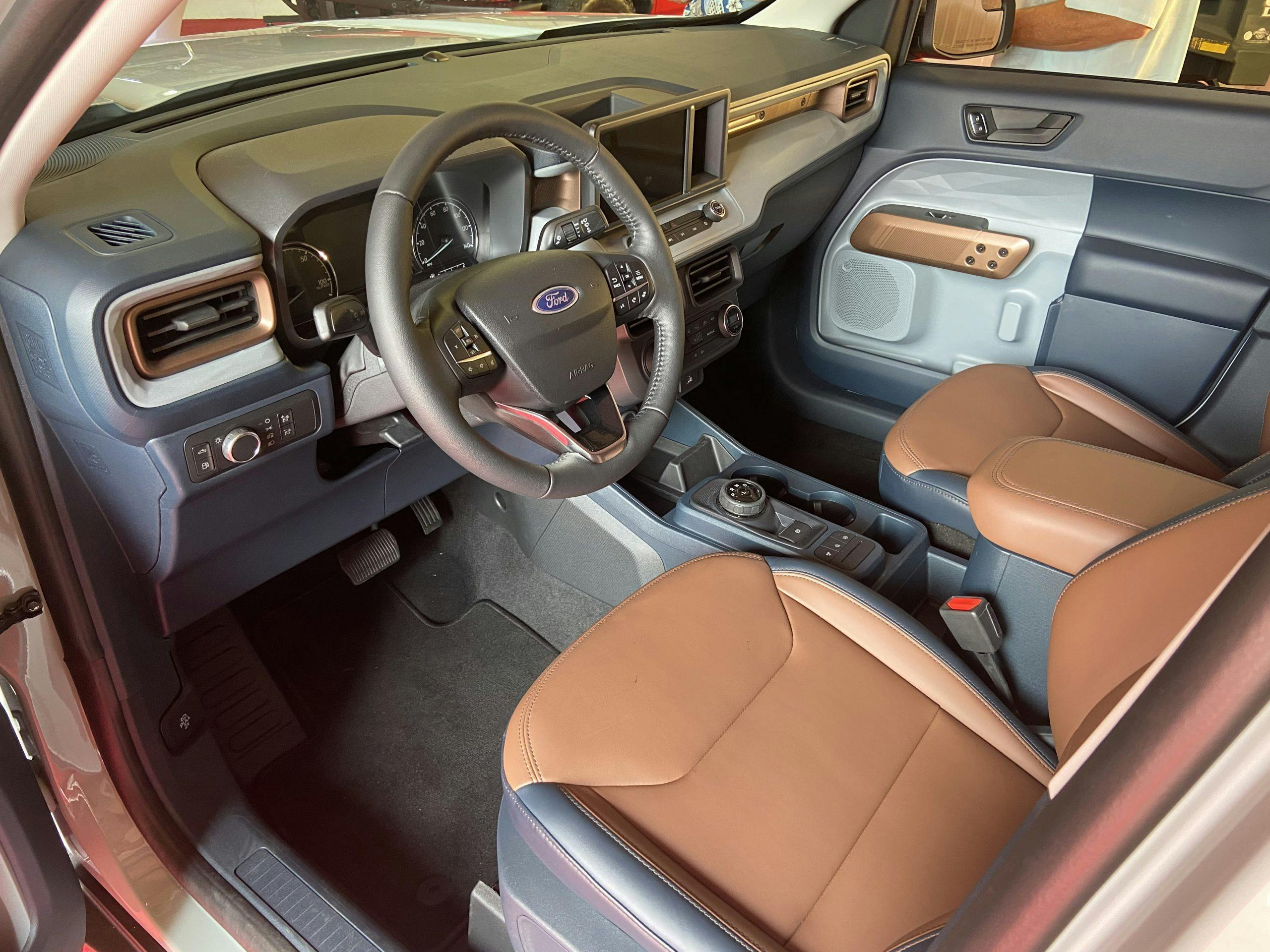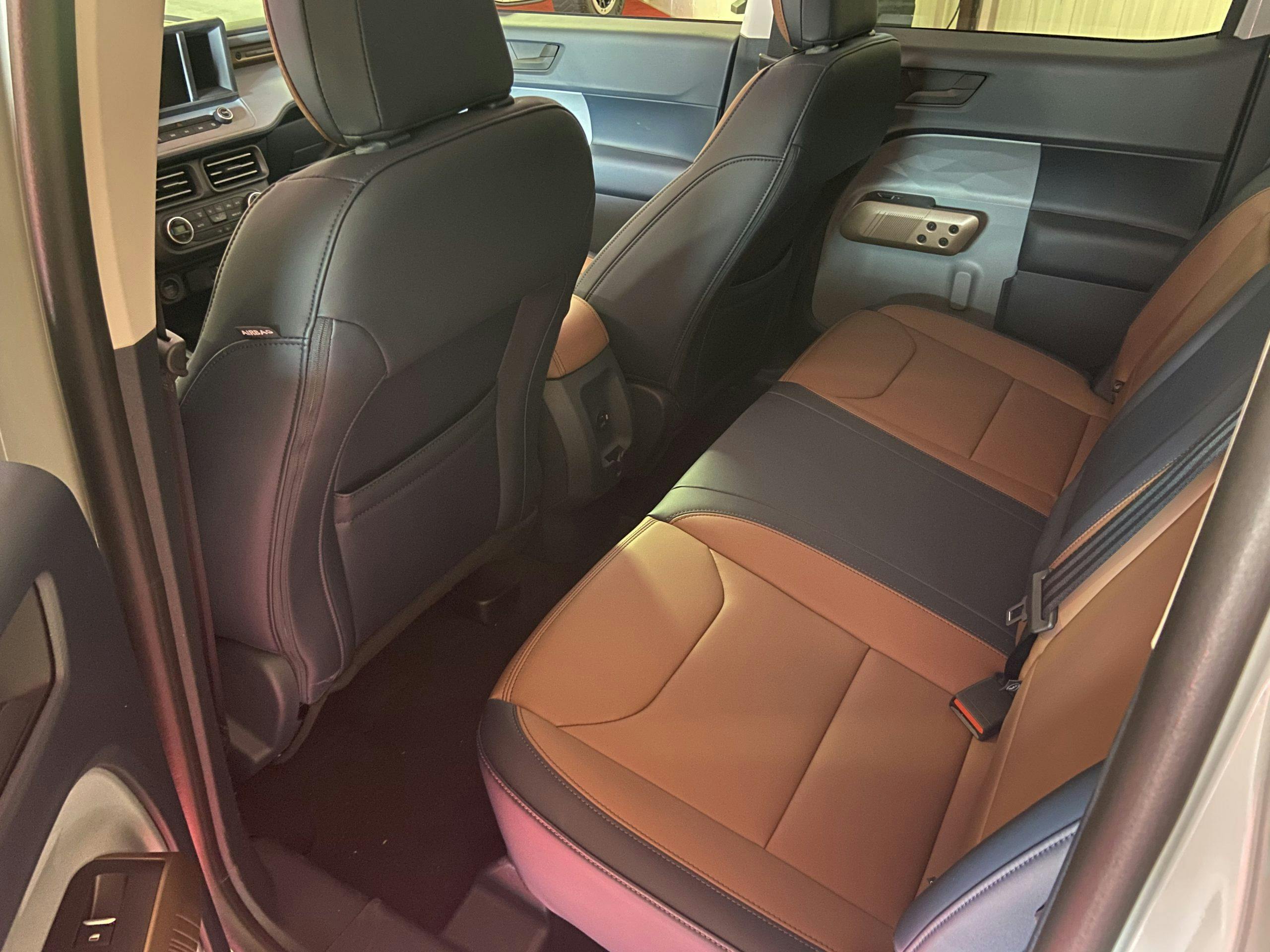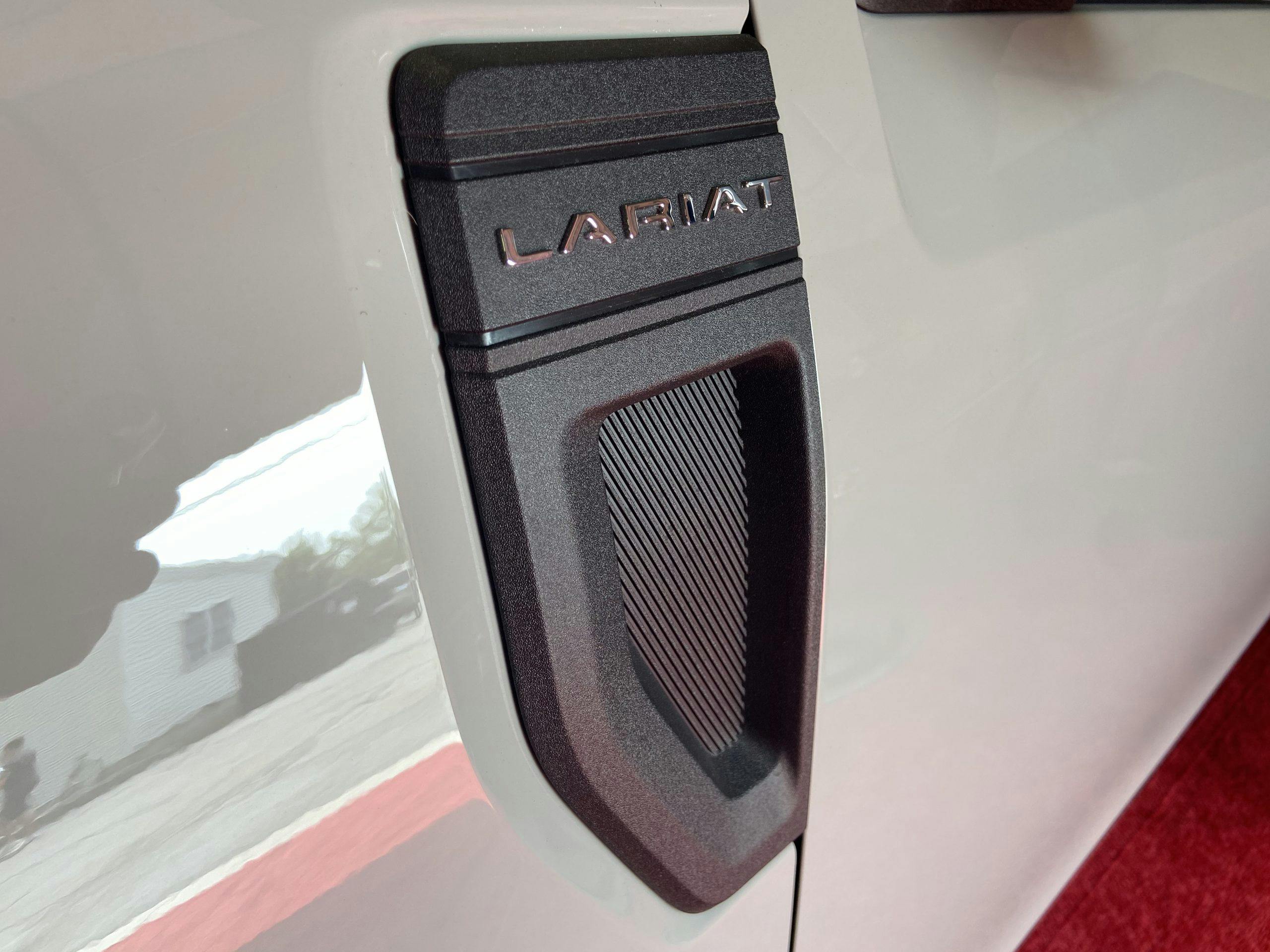The 2022 Ford Maverick resurrects an old name for a new purpose
After making its debut at the Chicago Auto Show in early July, the 2022 Maverick is preparing to thrust Ford into an arena it hasn’t inhabited in years—the compact pickup market. Our first in-person look, at the New England Motor Press Association annual banquet, confirms that the Maverick is indeed small. It’s dramatically scaled-down compared to an F-150 and considerably shorter and narrower than even the Ranger, which was supposed to be the brand’s re-entry into the smaller pickup market. Naturally, we had questions.
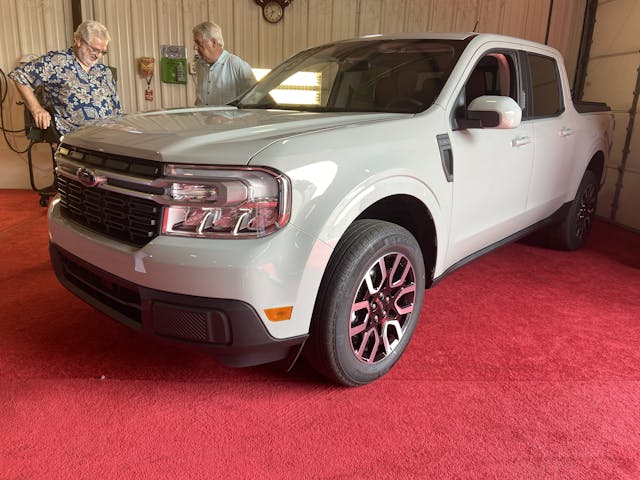
Why does Ford need a smaller truck?
We talked to Zach Nakos, Product Marketing Manager for the Maverick, about the need for a truck that slots in below the Ranger. “We had an opportunity to create an entry-level product to bring people into the showroom,” he said. The Maverick works as a draw for returning sedan customers who may be at a different life stage than they were when they bought something like a Fusion. Or think about an empty-nester, for example, who no longer needs the space to carry seven in an Explorer but wants the utility of a small pickup.
The Ranger ostensibly fits that profile, too, but the Ranger is a pure pickup. The Maverick is based on the C2 platform, which underpins the Ford Escape, Lincoln Corsair, Ford Bronco Sport, and the Ford Focus.
It’s important to remember, too, that those returning sedan customers that Nakos referenced have nothing else to come back to at Ford. There’s no longer a Fiesta, Focus, Fusion, nor Taurus in Ford’s product offering, Mercury has been gone for years, and Lincoln is now an SUV-only brand. The only “car” in the entire Ford Motor Company lineup is the Mustang.
As a result, the Maverick has to cover a lot of ground. It aims to compensate up for the loss of a sedan in the lineup by providing comfortable space for five inside. This is a front-drive platform, and as a result, the size of the transmission tunnel required for a rear-drive-based truck is significantly reduced, allowing for a lot of interior room.
The Maverick also offers a bed size pretty close to that of the Ranger, albeit in a much smaller, much shorter vehicle. “We tested the bed access with people in the fifth percentile in terms of height,” Nakos told us. “They were able to reach into the bed without standing on the bumper or the rear tire.” For a typical consumer of average height, even the middle of the bed is accessible without climbing.
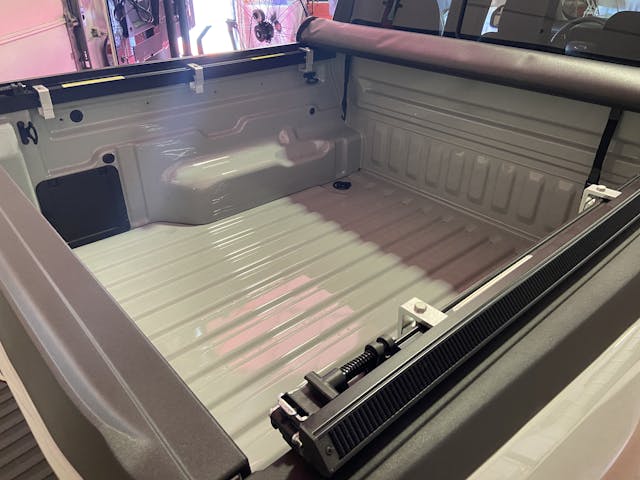
The height of the cab is also much shorter. The height of the shortest F-150 is 75.2 inches, or 6.2 feet. A four-wheel-drive F-150 is almost 6.5 feet tall. A four-wheel-drive Ranger is a baseball cap under six feet. The Maverick is five feet seven inches. It makes the Maverick a lot more appealing to customers in cities or congested suburbs where garage space makes owning a Ranger challenging, and an F-150 impossible.
What’s the fuel economy like?
Fuel efficiency is the other thing that makes the Maverick attractive. The base Maverick is a front-wheel-drive hybrid, offering up to 40 mpg from its 191-hp equivalent hybrid drivetrain—better output and efficiency than what you could’ve expected out of a new Focus. It offers 500 miles of range on a single tank of gas, plus enough payload capacity to carry 1500 pounds, or towing for up to 2000 pounds—plenty for customers who tow watercraft or small fishing boats.
For customers who love the size, but aren’t as concerned with fuel mileage, the Maverick is also available with a conventional 250-hp 2.0-liter EcoBoost four-cylinder with an eight-speed transmission. With an available tow package, it can tow up to 4000 pounds, enough for the average 21-foot boat.
What about the interior digs?
If you’ve looked at pickups over the last decade, the first thing you’ll notice with the Maverick—aside from its size—is the simplicity of the instrument panel and center stack. The cabin has all the features a modern vehicle shopper is looking for, but the gigantic touchscreen you’ll find in a typical full-size truck (think Ram 1500) isn’t there. Heat and audio controls are operated by four simple knobs you already know how to use without fumbling at speed. The gauges are simple and easy to read.
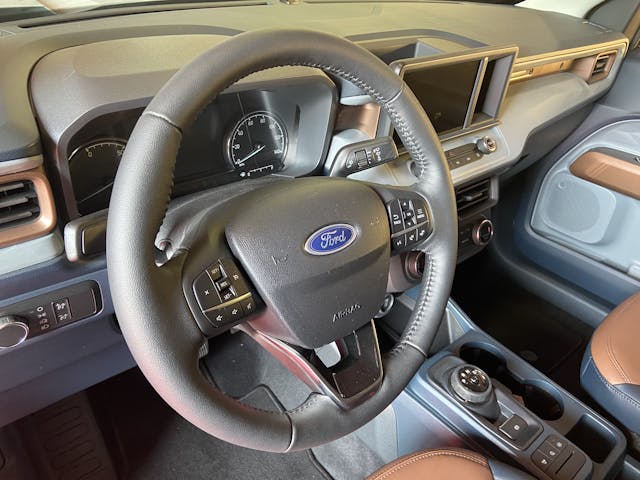
With the front seats moved all the way to the back of the tracks, there’s still room in the rear for adults. With the seats set at a more average position, the rear seat legroom is generous, and so is storage. Under the rear seat, there’s enough storage height to fit a fully inflated volleyball and width to carry laptop bags.
Will it cost an arm and a leg?
We’ve arrived the somewhat shocking part of this entire offering: In base form—front-wheel-drive with the hybrid driveline—the Maverick comes in at five bucks under $20,000 ($21,490 with destination). That makes it the cheapest vehicle in Ford’s entire product line, by $400.
Naturally, you’ll spend more money if you want better appointments, all-wheel drive, and the 2.0-liter powerplant. But you’d have to go well out of your way to spend more than $32,000 on a Maverick.
Like the 2022 Maverick, the 1970 Maverick was intended to be an “import fighter,” as described by an article by Don Woodward in Utah’s Deseret News in 1969, announcing the original Maverick’s launch. The import that the 2022 Maverick appears to be directly fighting is Honda’s Ridgeline, which despite its merits for many customers, is notable for being universally derided by people who don’t own them. People who do love them and have no issue spending upwards of $42,000 to get a top-tier example.
A fully loaded “First Edition” Maverick with everything on the option list including all-wheel drive and the EcoBoost 2.0-liter comes in at a staggering $10,000 less. Since 2006, Honda has had the front-drive truck segment completely to itself. Now it certainly appears that there’s a fight afoot, and Ford seems poised to win it, unless the Hyundai Santa Cruz proves a world-beater.
What’s with the name?
Over the last year and a half, Ford seems to be on a singular mission to troll automotive enthusiasts with its naming conventions. Veins bulged when the Mustang Mach-E debuted, swelled to the breaking point when the company started taking reservations for the F-150 Lightning, and popped entirely as two-thirds of the country seems unable to discern the difference between a Bronco and a Bronco Sport.
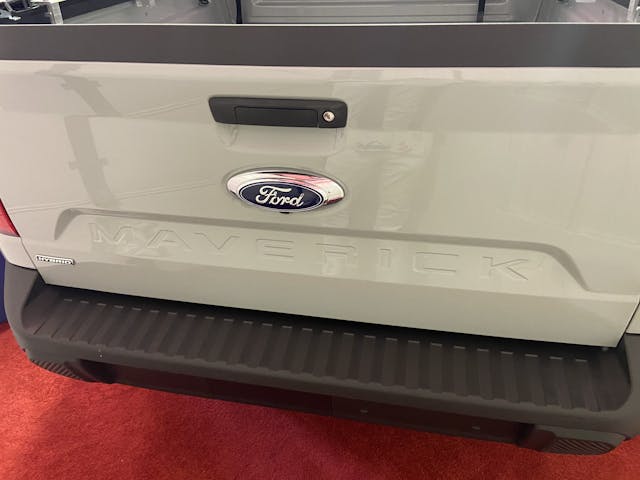
For a rapidly dwindling number of consumers, “Ford Maverick” equates to the two-door economy car that replaced the Falcon. Of course, Ford hasn’t built a car with that name since the Carter administration. And even then, it only used the name for seven years. The median American car shopper was born six years after Ford quit making the original car. The average person wandering into a Ford showroom is unaware that the 1970 Maverick even existed.
In that Deseret News piece from 1969, Don Woodward closes with the etymology of the name: “The Maverick takes its name from a Texas pioneer named Samuel Augustus Maverick, who refused to have his herd of 400 cattle branded. This bit of independence, in an area where the brand was the only seal of ownership, immortalized his name in the English language.”
If Ford has bet on the right horse, to use a pained metaphor too often pinned on the Mustang, that Maverick designation may be wholly appropriate.
